Post Overview
-
Analysis
10 years ago +11 11 0
+11 11 0Tracking A Mysterious Group of Asteroid Outcasts
Astronomers may have found the source of a particularly hard-to-spot group of near-Earth asteroids
-
Analysis
10 years ago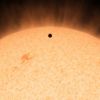 +14 14 0
+14 14 0Spitzer Confirms Closest Rocky Exoplanet - SpaceRef
Using NASA's Spitzer Space Telescope, astronomers have confirmed the discovery of the nearest rocky planet outside our solar system, larger than Earth and a potential gold mine of science data.
-
Analysis
10 years ago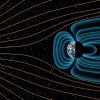 +17 17 0
+17 17 0Earth's magnetic shield is much older than previously thought
Since 2010, the best estimate of the age of Earth's magnetic field has been 3.45 billion years. But now a researcher responsible for that finding has new data showing the magnetic field is far older.
0 comment(s) via phys.org -
Analysis
10 years ago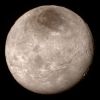 +11 11 0
+11 11 0Mystery Solved? Why Pluto's Big Moon Charon Has a Red Pole
The dark red pole on Pluto's largest moon Charon may be some of the dwarf planet's own siphoned-off atmosphere.
-
Analysis
10 years ago +16 16 0
+16 16 0Gaia satellite and amateur astronomers spot one in a billion star.
A team of researchers has discovered the first known system, Gaia 14aae, where one star completely eclipses the other — a type of a two-star system known as a cataclysmic variable.
-
Analysis
10 years ago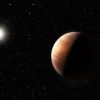 +18 18 0
+18 18 0Jupiter twin discovered around solar twin
Astronomers have used the ESO 3.6-meter telescope to identify a planet just like Jupiter orbiting at the same distance from a sun-like star, HIP 11915. According to current theories, the formation of Jupiter-mass planets plays an important role in sh ...
-
Analysis
10 years ago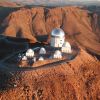 +16 16 0
+16 16 0Astronomers spy brightest-ever supernova
Exploding star is twice as luminous as any other reported.
-
Analysis
10 years ago +16 16 0
+16 16 0Enormous Black Hole Is Too Big for Its Galaxy
A newfound giant black hole nearly as massive as 7 billion suns is dozens of times larger than astronomers expected given its host galaxy's size, researchers say. The finding may call most current models of galaxy formation into question.
-
Analysis
10 years ago +10 10 0
+10 10 0Rare system of five stars discovered - BBC News
Astronomers have discovered a very rare system of five connected stars.
-
Analysis
10 years ago +20 20 0 x 1
+20 20 0 x 1NuSTAR Stares Deep into Hidden Lairs of Black Holes
The high-energy X-ray eyes of NASA's NuSTAR have peered into some of the most heavily buried supermassive black holes known.
-
Analysis
10 years ago +10 10 0
+10 10 0Galactic crashes fuel quasars.
When galaxies collide, bright things happen in the universe. Using the Hubble Space Telescope's infrared vision, astronomers have unveiled some of the previously hidden origins of quasars, Read more at: http://phys.org/news/2015-06-galactic-fu ...
0 comment(s) via phys.org -
Analysis
10 years ago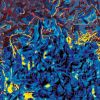 +24 24 0 x 2
+24 24 0 x 2A Universe Made of Tiny, Random Chunks
One of science’s most crucial yet underappreciated achievements is the description of the physical universe using mathematics
-
Analysis
10 years ago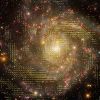 +15 15 0
+15 15 0Magnetic field discovery gives clues to galaxy-formation processes | Astronomy.com
Astronomers making a detailed multi-telescope study of a nearby galaxy have discovered a magnetic field coiled around the galaxy’s main spiral arm.
-
Analysis
10 years ago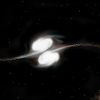 +17 17 0
+17 17 0Galactic crashes fuel quasars, study finds
Using the Hubble Space Telescope’s infrared vision, astronomers have unveiled some of the previously hidden origins of quasars, the brightest objects in the universe.
-
Analysis
10 years ago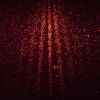 +14 14 0
+14 14 0How gravity kills Schrödinger's cat
Theorists argue that warped space-time prevents quantum superpositions of large-scale objects.
-
Analysis
10 years ago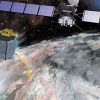 +14 14 0
+14 14 0Rosetta space orbiter to be moved closer to Philae lander comet
Mission will improve contact between orbiter and Philae lander after agency says data already received is ‘amazingly exciting’
-
Analysis
10 years ago +14 14 0
+14 14 0Mercury only Survivor of Close Orbiting Planets Around the Sun
The area of our solar system where Mercury resides may once have held as many as four rocky planets. Violent collisions could have left it as the last survivor.
-
Analysis
10 years ago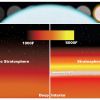 +16 16 0
+16 16 0Hubble detects 'sunscreen' layer on distant planet
NASA's Hubble Space Telescope has detected a stratosphere, one of the primary layers of Earth's atmosphere, on a massive and blazing-hot exoplanet known as WASP-33b.
0 comment(s) via phys.org -
Analysis
10 years ago +13 13 0
+13 13 0Milky Way Map Pins Down Our Galaxy's Arms
Mapping our Milky Way galaxy is a mind-bending challenge, but a new view of our galactic home is helping refine that map by charting more than 400 clusters where new stars are born.
-
Analysis
10 years ago +13 13 0
+13 13 0Sentinel-2 operations
Following on from the Sentinel-1 radar satellite, Sentinel-2 is the next ESA mission dedicated to Europe’s ambitious Copernicus programme. It carries an innovative high-resolution optical imager payload providing a new perspective of our planet' ...




















